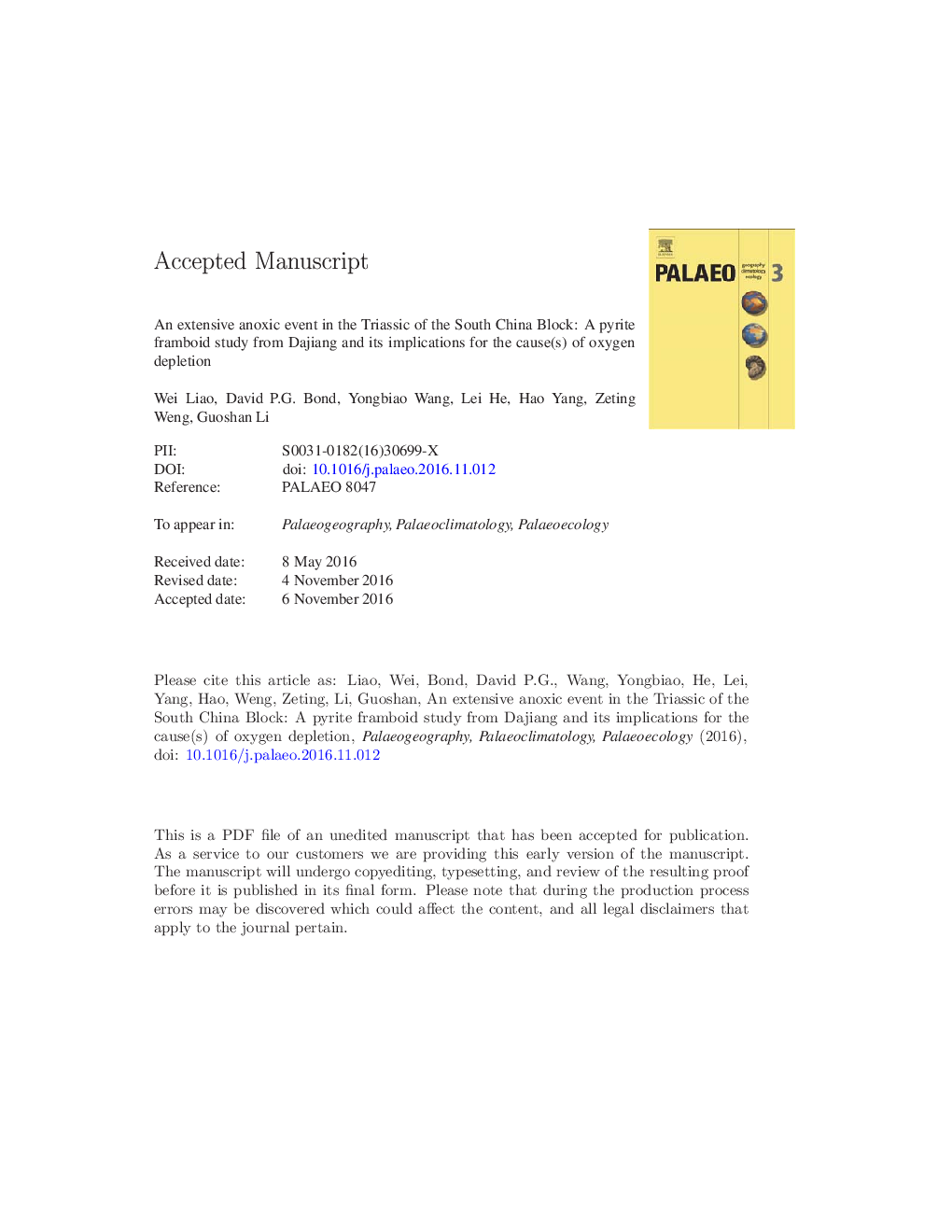| کد مقاله | کد نشریه | سال انتشار | مقاله انگلیسی | نسخه تمام متن |
|---|---|---|---|---|
| 8868617 | 1622106 | 2017 | 41 صفحه PDF | دانلود رایگان |
عنوان انگلیسی مقاله ISI
An extensive anoxic event in the Triassic of the South China Block: A pyrite framboid study from Dajiang and its implications for the cause(s) of oxygen depletion
ترجمه فارسی عنوان
یک رخداد بی نظیر در تریاس بلوک جنوب چین: مطالعه ی فریبوبید پیریت از داجینگ و پیامدهای آن برای علت تخریب اکسیژن
دانلود مقاله + سفارش ترجمه
دانلود مقاله ISI انگلیسی
رایگان برای ایرانیان
کلمات کلیدی
موضوعات مرتبط
مهندسی و علوم پایه
علوم زمین و سیارات
فرآیندهای سطح زمین
چکیده انگلیسی
Water column oxygen deficiency has been considered as a potent driver of the extinction of marine benthos, and is a main feature of marine environments in the aftermath of the end-Permian mass extinction. The record of Permian-Triassic anoxia is more complex than previously thought, and is seen to vary between different palaeogeographic settings, but a full understanding is hindered by a paucity of evidence. During the Permian-Triassic interval the South China Block was located equatorially with Palaeotethys to the north and western Panthalassa to the south. This specific configuration provides a unique opportunity to compare the extent and duration of oxygen deficiency in Palaeotethys and Panthalassa under broadly similar climatic conditions. Sedimentary facies and pyrite framboid size-frequency distributions suggest that the oxygen-poor conditions became widespread across the shallow-marine carbonate platform of the South China Block immediately above the Permian-Triassic boundary and mass extinction level. Oxygen deficiency was most intense at the southern margin of the block where it met Panthalassa. Proposed drivers of the expansion of oxygen minimum zones into platform settings include enhanced terrigenous input and/or ocean stratification, or alternatively the upwelling of nutrient-rich deep ocean water. The former mechanisms are theoretically more likely to have operated in the relatively restricted Palaeotethys which was surrounded by ancient lands. In contrast, Panthalassa would likely have experienced stronger oceanic circulation and therefore be more susceptible to the effects of upwelling. Although variations in the record of the South China Block anoxic event might reflect local factors, the greater intensity of oxygen deficiency and a concomitant larger negative shift in carbonate carbon isotopes on its Panthalassan margin point to a key role for upwelling. This mechanism was likely a major driver of the Permian-Triassic global oceanic anoxic event, which itself was at least partly responsible for the ongoing inhospitable conditions and delayed recovery following the end-Permian extinction.
ناشر
Database: Elsevier - ScienceDirect (ساینس دایرکت)
Journal: Palaeogeography, Palaeoclimatology, Palaeoecology - Volume 486, 15 November 2017, Pages 86-95
Journal: Palaeogeography, Palaeoclimatology, Palaeoecology - Volume 486, 15 November 2017, Pages 86-95
نویسندگان
Wei Liao, David P.G. Bond, Yongbiao Wang, Lei He, Hao Yang, Zeting Weng, Guoshan Li,
